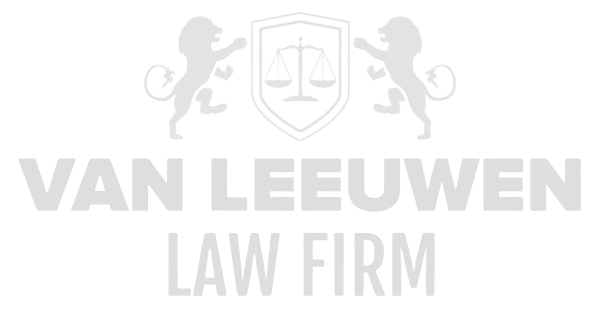Operationele technologie (OT) en cyberbeveiliging vormen samen een integraal en onmisbaar onderdeel van de Cyber Security Services (CSS), met een specifieke focus op het effectief beheersen van frauderisico’s binnen complexe industriële en infrastructuuromgevingen. OT verwijst naar de hardware en software die industriële processen en fysieke systemen aansturen, variërend van energiecentrales en waterzuiveringsinstallaties tot productieprocessen en transportnetwerken. De bescherming van deze systemen tegen cyberdreigingen is cruciaal omdat verstoringen direct impact kunnen hebben op de veiligheid, continuïteit en integriteit van kritieke bedrijfsactiviteiten. De verwevenheid van OT met IT-netwerken vergroot echter de kwetsbaarheid en vraagt om een gespecialiseerde, diepgaande beveiligingsaanpak.
Binnen het hedendaagse landschap van nationale en internationale bedrijven, inclusief hun bestuurders en toezichthouders, evenals overheidsinstellingen, zijn beschuldigingen van financiële wanpraktijken zoals fraude, corruptie, witwassen, omkoping en schending van internationale sancties steeds vaker het gevolg van cyberbeveiligingsincidenten die operationele technologieën aantasten. Deze incidenten kunnen een kettingreactie veroorzaken die niet alleen de bedrijfsvoering ernstig verstoort, maar ook de reputatie langdurig beschadigt en aanzienlijke juridische en financiële consequenties met zich meebrengt. Het realiseren van robuuste OT-cyberbeveiliging is derhalve essentieel voor het waarborgen van frauderisicobeheer en het voorkomen van escalaties die organisaties onherstelbare schade kunnen toebrengen.
(a) Regelgevende Uitdagingen
De regelgevende uitdagingen die gepaard gaan met operationele technologie en cyberbeveiliging zijn bijzonder complex vanwege de combinatie van traditionele industriële regelgeving en snel evoluerende cyberwetgeving. Sectoren waarin OT prominent is, zoals energie, water, transport en gezondheidszorg, vallen vaak onder strenge nationale en internationale regelgevingen die zowel fysieke veiligheid als digitale beveiliging voorschrijven. Dit leidt tot een samenspel van compliance-eisen die op elkaar afgestemd moeten worden om juridische risico’s te minimaliseren.
Het voldoen aan deze uitgebreide regelgevingen vergt voortdurende monitoring van de juridische ontwikkelingen en het anticiperen op wijzigingen die direct invloed hebben op OT-omgevingen. Dit omvat onder meer wetgeving omtrent data-integriteit, kritieke infrastructuurbescherming, privacybescherming en sanctiewetgeving. Niet-naleving kan leiden tot hoge boetes, reputatieschade en zelfs het stilleggen van essentiële processen.
Daarnaast vergt de grensoverschrijdende aard van veel industriële operaties een zorgvuldige afstemming tussen verschillende jurisdicties. Nationale wetgevingen verschillen aanzienlijk, terwijl internationale normen zoals ISO/IEC 27019 en NIST-guidelines dienen als referentiepunten voor het implementeren van cybersecuritymaatregelen in OT-omgevingen. Dit vereist een geïntegreerde aanpak die rekening houdt met zowel lokale als internationale compliance.
Het waarborgen van transparantie richting toezichthouders zonder operationele en veiligheidsgevoelige informatie bloot te geven, vormt een bijkomende uitdaging. Vertrouwelijkheid moet gegarandeerd blijven, terwijl tegelijkertijd aantoonbare naleving en rapportage mogelijk zijn. Dit vraagt om geavanceerde technische en juridische oplossingen die deze balans mogelijk maken.
Ten slotte vergt de toenemende complexiteit van regelgevende kaders een strategische benadering waarbij niet alleen huidige compliance wordt gegarandeerd, maar ook toekomstige wet- en regelgeving wordt geanticipeerd. Dit waarborgt dat OT-cyberbeveiligingsmaatregelen duurzaam en flexibel zijn, waardoor risico’s op lange termijn effectief worden beheerst.
(b) Operationele Uitdagingen
Operationele uitdagingen binnen OT-cyberbeveiliging zijn omvangrijk en worden versterkt door de specifieke kenmerken van industriële systemen. OT-omgevingen zijn vaak legacy-gedreven, met systemen die decennia oud zijn en niet zijn ontworpen met cybersecurity in gedachten. Dit maakt integratie van moderne beveiligingsmaatregelen ingewikkeld zonder de stabiliteit en beschikbaarheid van processen in gevaar te brengen.
Een belangrijke operationele uitdaging is het garanderen van continuïteit en veiligheid van kritieke processen tijdens de implementatie van beveiligingsupdates en patches. Onzorgvuldig beheer kan leiden tot storingen die productieprocessen stilleggen of zelfs gevaarlijke situaties veroorzaken. Daarom vereist OT-cybersecurity een afgewogen aanpak waarin veiligheid en operationele beschikbaarheid hand in hand gaan.
Daarnaast zijn de operationele omgevingen vaak gedistribueerd en geografisch verspreid, wat het toezicht en beheer bemoeilijkt. Het real-time monitoren van alle componenten binnen OT-netwerken vraagt om geavanceerde detectiesystemen en een robuuste infrastructuur die snel kan reageren op incidenten zonder onnodige onderbrekingen.
Het opleiden van personeel dat direct met OT werkt vormt een ander essentieel aandachtspunt. Medewerkers moeten bewust worden gemaakt van specifieke cyberrisico’s en getraind in het herkennen van afwijkend gedrag en het naleven van beveiligingsprotocollen. Menselijke fouten blijven immers een van de grootste kwetsbaarheden binnen OT-cyberbeveiliging.
Tot slot vergt het managen van leveranciers- en ketenrisico’s bijzondere aandacht. Industriële systemen maken vaak gebruik van hardware en software van diverse derde partijen. Het waarborgen van de beveiligingsintegriteit door de gehele keten is cruciaal om zwakke schakels en indirecte risico’s te voorkomen.
(c) Analystische Uitdagingen
Analytische uitdagingen binnen OT-cyberbeveiliging zijn intensief vanwege de grote hoeveelheid, diversiteit en complexiteit van data die afkomstig is van industriële processen. Deze data moet continu worden geanalyseerd om afwijkingen en potentiële dreigingen te detecteren, wat specialistische kennis en geavanceerde tools vereist.
Een centraal analytisch vraagstuk is het onderscheid maken tussen normale operationele variaties en abnormale gedragingen die kunnen wijzen op een cyberaanval of frauduleuze activiteit. Dit vraagt om het ontwikkelen van geavanceerde algoritmen en kunstmatige intelligentie die patronen herkennen zonder false positives die onnodige verstoringen veroorzaken.
Daarnaast moet er diepgaande integratie plaatsvinden tussen OT-data en IT-beveiligingsinformatie om een holistisch beeld van de cyberdreiging te verkrijgen. Het combineren van technische indicatoren met bedrijfsprocessen en risicoprofielen maakt het mogelijk om potentiële fraude en sabotage vroegtijdig te signaleren.
De continue stroom van real-time data vraagt om schaalbare en flexibele analysecapaciteiten die snel kunnen inspelen op nieuwe dreigingen. Deze dynamiek vereist permanente verbetering van analysemethoden en investeringen in state-of-the-art monitoringplatforms.
Tot slot moeten analytische bevindingen begrijpelijk en bruikbaar worden gepresenteerd aan diverse stakeholders, van technici tot bestuurders. Effectieve communicatie van complexe analyses is essentieel om snel en adequaat te kunnen reageren en beslissingen te onderbouwen.
(d) Strategische Uitdagingen
Strategische uitdagingen binnen operationele technologie en cyberbeveiliging draaien om het ontwikkelen van een veerkrachtige en toekomstgerichte beveiligingsstrategie die in lijn is met de bredere bedrijfsdoelen. Hierbij staat het beschermen van kritieke infrastructuren tegen steeds geavanceerdere dreigingen centraal, terwijl tegelijkertijd innovatie en digitalisering worden gefaciliteerd.
Een belangrijke strategische component is het integreren van OT-cyberbeveiliging in het bredere risicomanagement en governancekader van de organisatie. Dit vraagt om duidelijke beleidslijnen, verantwoordingsstructuren en investeringsbeslissingen die cybersecurity een prominente plek geven in de strategische agenda.
Daarnaast moet strategie rekening houden met de snelle evolutie van technologieën zoals het Industrial Internet of Things (IIoT), cloud-integratie en kunstmatige intelligentie. Deze ontwikkelingen brengen nieuwe risico’s mee, maar bieden ook kansen om de beveiliging te versterken door betere detectie, automatisering en responsmogelijkheden.
Het bouwen van strategische partnerschappen met technologieleveranciers, cybersecurity-experts en regelgevende instanties is onontbeerlijk om kennis te delen, innovatie te stimuleren en gezamenlijke weerbaarheid te vergroten. Samenwerking is een cruciale succesfactor in de huidige complexe dreigingsomgeving.
Tot slot omvat strategisch denken ook het anticiperen op maatschappelijke en ethische verwachtingen, zoals transparantie en duurzaamheid. Organisaties die deze dimensies integreren, versterken niet alleen hun reputatie maar creëren ook vertrouwen bij klanten, investeerders en de maatschappij, wat essentieel is voor langdurig succes.











